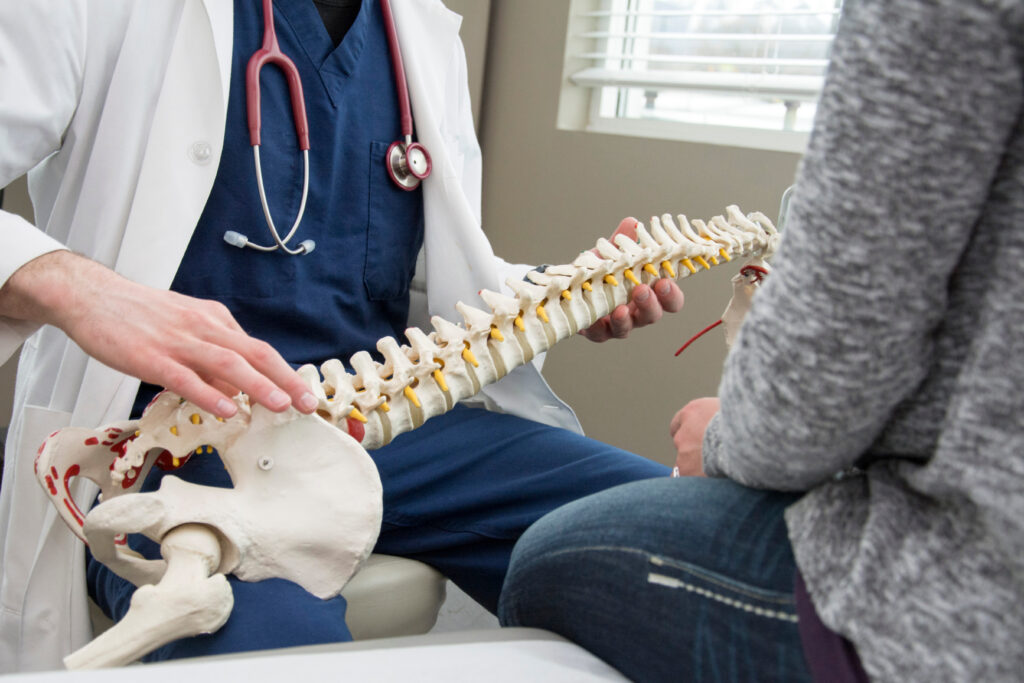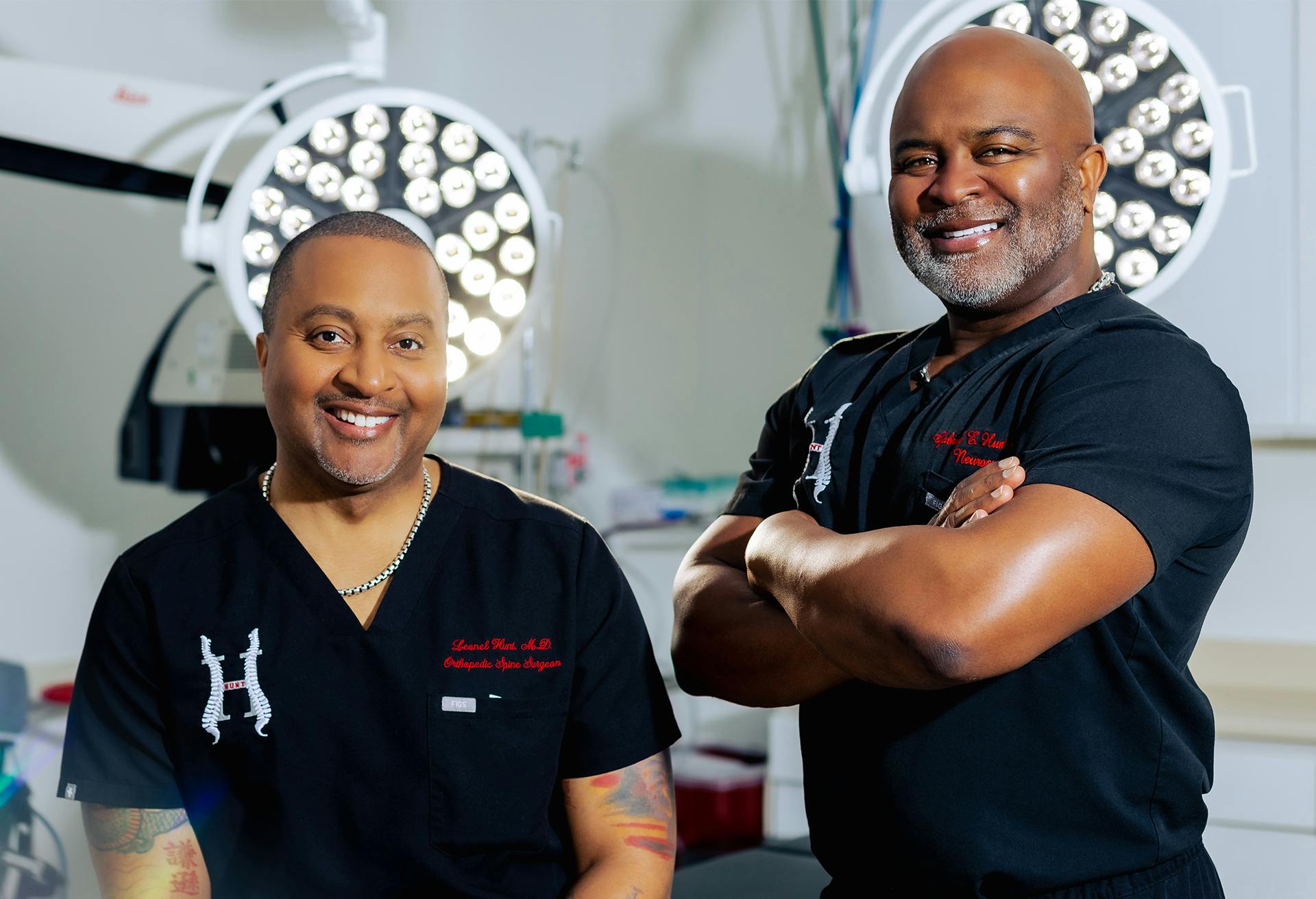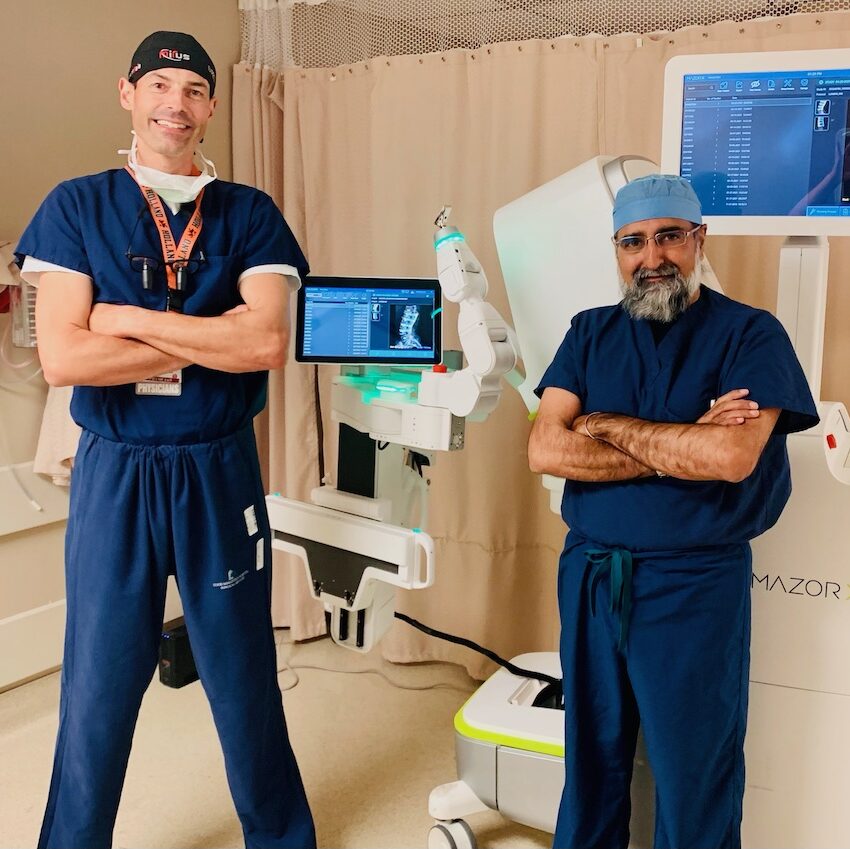How to Plan for Visits to the Best Spine Surgeons in St Louis MO
How to Plan for Visits to the Best Spine Surgeons in St Louis MO
Blog Article
What Spinal Column Issues Commonly Result In Procedure for Relief?
When conservative therapy choices fall short to provide ample alleviation from consistent pain and practical impairment,Spinal column issues that necessitate surgical treatment frequently develop. Conditions such as herniated discs, spine constriction, and degenerative disc illness often result in surgeries focused on alleviating signs and bring back flexibility. Recognizing the specific indicators for surgical procedure and the kinds of interventions readily available is critical for both individuals and doctor. As we explore the intricacies surrounding these spinal column problems, it comes to be apparent that the decision to seek medical options is multifaceted and warrants cautious consideration.

Herniated Discs
Herniated discs are a typical spine condition that regularly causes medical treatment when conventional therapies stop working. This condition takes place when the soft internal gel of a back disc protrudes through a tear in the tougher external layer, possibly compressing neighboring nerves. Symptoms frequently consist of localized pain, emitting pain in the arm or legs, and neurological shortages such as tingling or weakness.

Surgical procedure intends to alleviate discomfort and bring back function by eliminating the herniated section of the disc or maintaining the affected spine sector. While several individuals experience substantial renovation complying with surgical treatment, it is vital to evaluate the benefits and risks in appointment with a qualified back professional. Inevitably, prompt treatment is important to improve and avoid further complications lifestyle for individuals experiencing this devastating condition.
Spine Constriction
Experiencing back stenosis can substantially affect an individual's movement and lifestyle. This condition happens when the spine canal narrows, positioning stress on the spine and nerves. Frequently seen in the lumbar (lower back) and cervical (neck) regions, back stenosis commonly results from degenerative modifications connected with aging, such as joint inflammation, disc herniation, or enlarging of tendons.
Signs of spine constriction can differ, but they usually include discomfort, feeling numb, tingling, and weakness in the extremities. These signs and symptoms might worsen with activity or long term standing and frequently boost with remainder. In serious situations, individuals may experience troubles with balance and coordination, causing an increased risk of drops.
When conventional treatments, such as physical therapy, medications, and way of life alterations, fall short to minimize symptoms, surgical treatment might be thought about. Treatments like laminectomy or spinal blend aim to decompress the damaged nerves and support the spinal column. Early medical diagnosis and treatment are crucial in managing back constriction effectively and preserving movement, inevitably improving the client's overall high quality of life.
Spondylolisthesis
Spondylolisthesis takes place when one vertebra slips ahead over the one below it, potentially resulting in back instability and nerve compression. This problem can emerge from various elements, consisting of genetic flaws, degenerative modifications, trauma, or repetitive anxiety injuries. Symptoms commonly include lower back pain, rigidity, and radiating discomfort in the legs, which can dramatically affect daily activities and overall lifestyle.
Medical diagnosis normally entails a complete medical analysis, imaging hop over to these guys research studies such as X-rays or MRI, and assessment of neurological function. The level of slippage is classified into qualities, with higher grades showing extra extreme displacement and a better probability of surgical intervention.

Early medical diagnosis and proper monitoring are essential in avoiding more complications and improving he said client end results. As spondylolisthesis can cause chronic discomfort and handicap, prompt intervention is vital for recovering back health and wellness.
Degenerative Disc Illness
Degenerative Disc Illness (DDD) is a condition characterized by the steady wear and tear of the intervertebral discs, which act as critical shock absorbers between the vertebrae of the spine. As these discs shed hydration and elasticity with time, they become less efficient at cushioning the vertebrae, bring about enhanced friction and stress on the back structures.
Clients with DDD often experience signs and symptoms such as persistent neck and back pain, stiffness, and minimized flexibility (best spine surgeons in st louis mo). The condition can likewise cause nerve compression if the degenerated discs lump or herniate, resulting in radicular discomfort, weakness, or pins and needles in the arm or legs
Diagnosis typically includes a mix of physical assessments, imaging research studies like MRI or CT checks, and individual history to assess the severity of disc deterioration and its influence on everyday tasks. Treatment choices array from conservative measures, including physical treatment and discomfort management, to more intrusive treatments when conventional actions fail. Surgical treatments, such as spinal combination or fabricated disc replacement, may be suggested for individuals with considerable discomfort and functional disability. On the whole, very early intervention and customized monitoring methods are vital for mitigating the effects of DDD and boosting client outcomes.
Spine Lumps
Spine growths, which can be benign or malignant, represent another significant reason for back problems that may require medical treatment (best spine surgeons in st louis mo). These growths can come from within the spine (key lumps) or technique from other parts of the body (additional tumors) Their presence can cause different symptoms, consisting of localized pain, neurological deficits, and alterations in wheelchair
Surgical therapy for spine growths usually intends to reduce symptoms by eliminating the lump, maintaining the spine, and resolving any type of compressive impacts on the spine cable or nerves. Indications for surgical procedure usually consist of considerable pain not receptive to conservative therapies, or neurological disability resulting from the lump's growth.

It is critical for patients providing with symptoms suggestive of spinal growths to undertake comprehensive analysis analyses, including imaging research studies and biopsies, to determine the appropriate program of activity (best spine surgeons in st louis mo). Early discovery and intervention can dramatically enhance client end results and high quality of life
Conclusion
In recap, different back issues, consisting of herniated discs, back stenosis, spondylolisthesis, degenerative disc illness, and spine growths, usually demand medical treatment when traditional treatments fall short to provide alleviation. These problems lead to substantial pain and functional problems, triggering the consideration of treatments such as discectomy, spine blend, and laminectomy. Eventually, surgical choices purpose to minimize discomfort, improve mobility, and bring back top quality of life for individuals influenced by these debilitating spinal problems.
Conditions such as herniated discs, back stenosis, and degenerative disc condition regularly lead to surgical procedures aimed at easing signs and symptoms and bring back movement.Herniated discs are a common spinal problem that regularly leads to surgical treatment when conservative treatments fail. Surgical interventions, such as spine fusion or man-made disc substitute, might be shown for individuals with considerable discomfort and useful impairment.Spine tumors, which can be benign or deadly, stand for one more considerable cause of spinal problems that may require medical treatment.In summary, numerous back issues, consisting of herniated discs, spinal constriction, spondylolisthesis, degenerative disc disease, and spinal lumps, frequently demand surgical intervention when conservative therapies fall short to offer alleviation.
Report this page